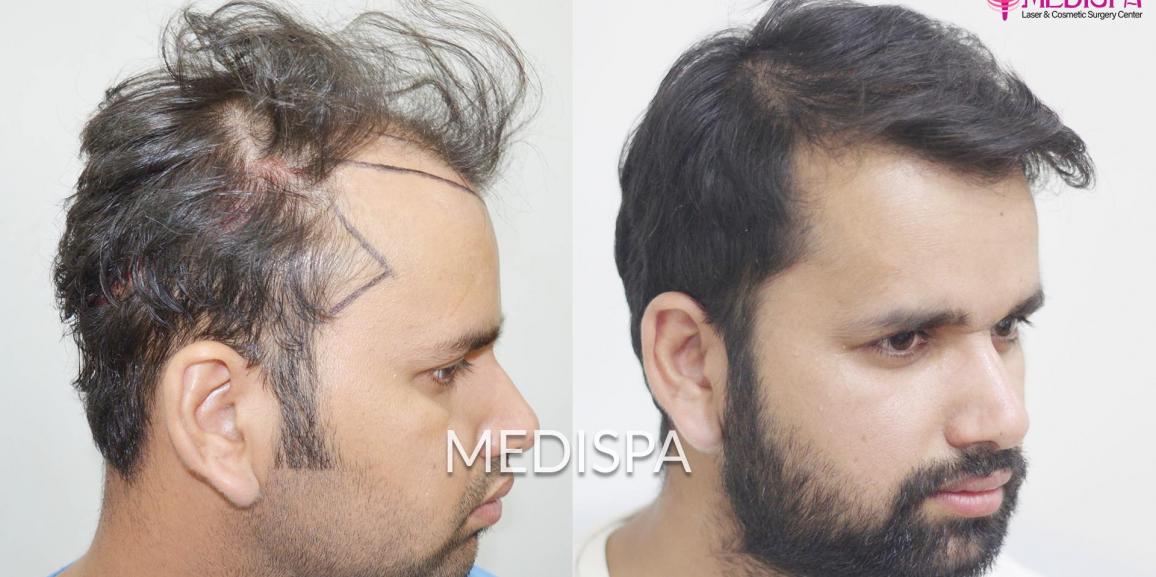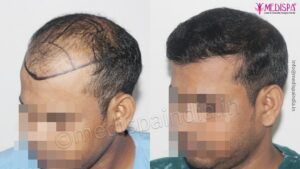
Usually, the procedure of hair transplant is free from any kind of side effects and considered as the best safe, infection-free, scarless and a painless cosmetic surgery requires an extreme artistic as well as the surgical understanding. The procedure strength is about their capability to extract the best possible number of DHT-resistant hair roots that finally implanted into the recipient balding part of the scalp.
Nowadays, the hair transplant in India gives the best option in order to get the advantages of the economic services at an economic cost of the procedure. As far as the cost is concerned, the hair transplant cost in India primarily based on the number of grafts, which is considered one of the genuine ways to put the cost.
The hair transplant surgery involves the transferring of hair roots from the donor areas; to a balding part known as the recipient area and thus the final implantation of grafts to fulfil the cosmetic goal of the hair transplant surgery. However, the procedure involves both the artistic as well as the surgical concern and the performing surgeon must have an in-depth understanding of both these aspects to meet the desired cosmetic goal of the surgery.
In this article, we will describe the possible side-effects associated with the Hair Transplant procedure is described below:
- Pain: The pain is very common that might occur in any kind of surgical procedure and thus quite possible with the hair transplant procedure as well. But, the pain associated during the hair root extraction in the hair transplant procedure is all bearable and no need to take as a serious concern. Yet, the local anaesthesia is given to the patients in order to make the surgical procedure smoothly. However, pain is common side effects that can be subsided with the dose of local anaesthesia.
- Scars: Scars are also a very common side effect that can occur, possibly, either the technique is FUT or the FUE hair transplant. The major differences between FUT and FUE scars is about the scar extent that needs the correction and thus the advanced closure technique of Trichophytic closure has been introduced into the hair transplant world. The scar occurs due to FUT technique appears as a linear scar that is perfectly closed by the Trichophytic closure and leaves very minimal sign that can be effectively camouflaged. On the other hand, the FUE technique leaves multiple donor scars in the form of circular white spot scars that looks awkward and it is difficult to remove these FUE multiple scars. However, in most of the cases, the strip/FUT method of the surgery is recommended to cover the respective grade of baldness.
- Swelling: It is very common with the hair transplant procedure as the extraction makes pressure causes the swelling. The swelling is most often with the FUE extraction due to random punching pressure. The swelling lasted for 3-4 days post-procedure and can be effectively managed by a scalp massage by outwards and down around the eyes. Application of ice packs is also advisable to minimize the swelling around the eyes.
- Numbness: After any kind of surgical procedure numbness occurs as a result of surgical effect. But, with the hair transplant procedure, it is very common and goes itself after a few days. It is not a serious concern and should take as a common issue of the post-procedure.
- Itching: Itching is very common after the hair restoration surgery that occurs as a result of newly graft implantation. Since the implantation of grafts is new to the skin and scalp is still getting used to the new skin and thus the tingling sensation occurs as a result of the growing process of new grafts.
Denouement:
In the nutshell, we can say that the procedure of hair transplant follows the regular norms of the surgical implications and seen both with the FUT as well as the FUE hair transplant. The side-effects occur with the hair transplant surgery is very common and goes itself naturally within a few days after the surgery.






